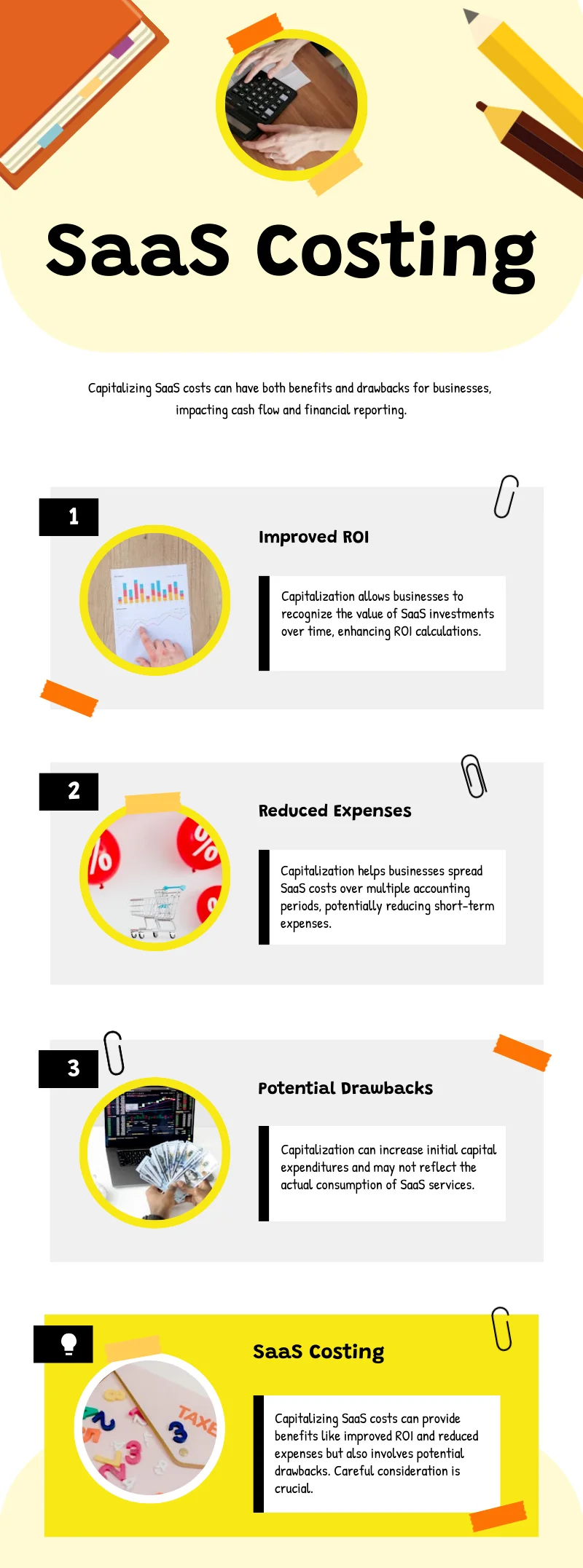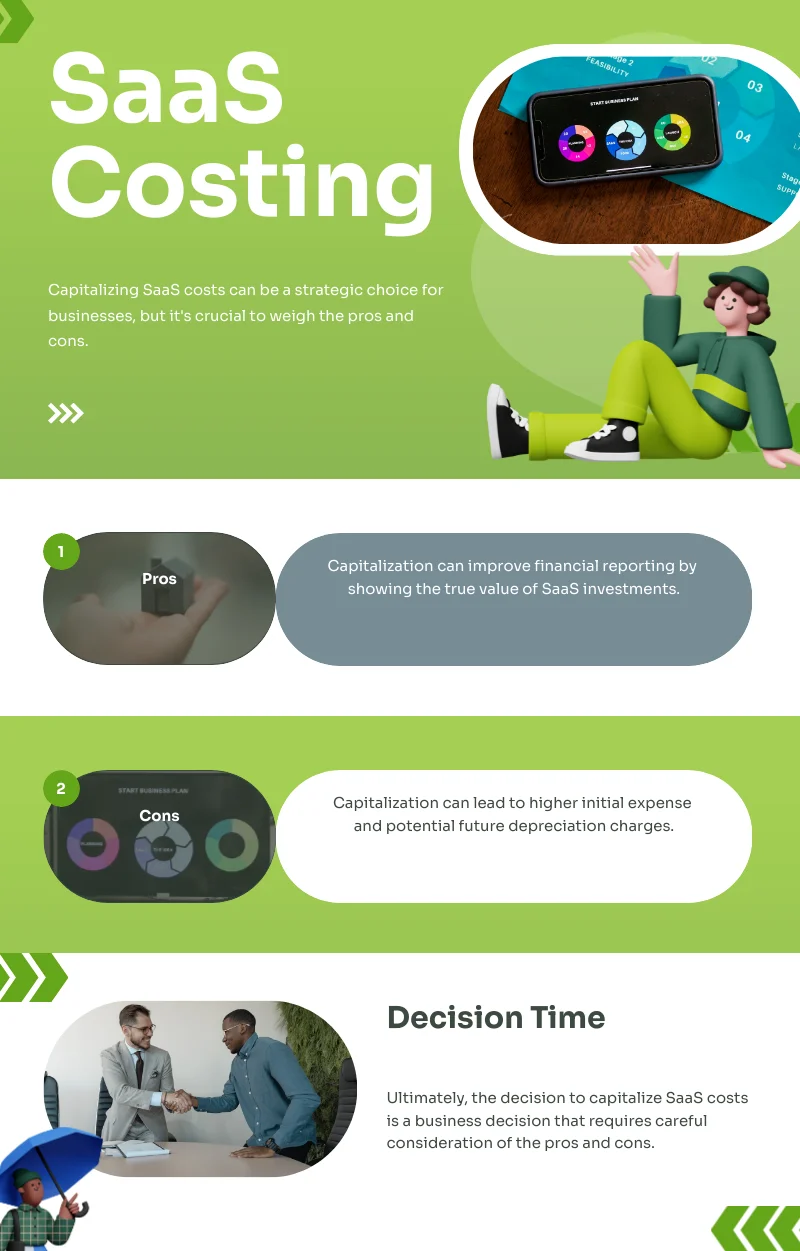Many businesses are shifting to Software as a Service (SaaS) solutions. But a big question arises: “Can SaaS implementation costs be capitalized?” This article will explore the details of this topic. We will discuss what SaaS is, the costs involved, and whether these costs can be capitalized. Let’s dive in!
What is SaaS?
SaaS stands for Software as a Service. It is a way to deliver software over the internet. Instead of buying software and installing it on your computer, you use it online. Some popular SaaS examples include:
- Google Workspace
- Salesforce
- Zoom
- Slack
Businesses love SaaS. It is often cheaper and easier to use than traditional software. You can access SaaS from anywhere with an internet connection. This flexibility is great for remote work.
Understanding SaaS Implementation Costs

When a business decides to use a SaaS solution, it incurs several costs. These costs can vary greatly. They may include:
- Subscription fees
- Implementation costs
- Training expenses
- Maintenance fees
Each of these costs plays a role in the overall budget. But we are particularly interested in implementation costs.
What Are Implementation Costs?
Implementation costs are the expenses related to setting up the SaaS software. These costs may include:
- Consulting fees
- Integration costs
- Data migration expenses
- Customization costs
Implementation is crucial for a successful SaaS rollout. If done right, it helps the software work well for your business.
Can SaaS Implementation Costs Be Capitalized?
Now, let’s address the big question: Can these costs be capitalized? Capitalizing costs means treating them as long-term assets. This can help spread expenses over time.
What Does Capitalization Mean?
Capitalization allows businesses to record an expense as an asset. This affects financial statements. Capitalized costs can appear on the balance sheet, rather than the income statement.
When costs are capitalized, they are amortized. Amortization spreads the cost over several years. This helps businesses manage their finances better.
Guidelines For Capitalization
The decision to capitalize costs depends on several factors. Here are some guidelines:
- Length of benefit: The cost should provide benefits for more than one year.
- Nature of expense: The expense should enhance the software’s value.
- Measurable outcomes: The results of the implementation should be clear.
In many cases, only certain implementation costs qualify for capitalization. Regular subscription fees usually do not qualify.
Costs That Can Be Capitalized
Some implementation costs may be capitalized. These include:
- Direct costs of implementing the software
- Customization costs that add value
- Integration costs with existing systems
- Data migration expenses that improve usability
These costs can enhance the software’s value. They can create measurable benefits over time.
Costs That Cannot Be Capitalized
On the other hand, some costs cannot be capitalized. These include:
- Monthly subscription fees
- Regular maintenance costs
- Training expenses for users
- Ongoing support costs
These costs are generally considered operating expenses. They do not provide long-term benefits.
Accounting Standards and Guidelines
Different countries have specific accounting standards. For example, in the United States, businesses follow GAAP. Under GAAP, only certain costs are eligible for capitalization.
Internationally, IFRS also has its guidelines. It’s important to check local regulations. Consulting with an accountant can help clarify these rules.
Pros and Cons of Capitalizing SaaS Costs

There are both advantages and disadvantages to capitalizing SaaS implementation costs.
Advantages
- Improved financial ratios: Capitalizing can improve balance sheet ratios.
- Better expense management: Amortization spreads costs over years.
- Tax benefits: Certain capitalized costs may provide tax advantages.
Disadvantages
- Complexity: Capitalizing costs can complicate financial statements.
- Regulatory compliance: Adhering to accounting rules can be challenging.
- Potential for misunderstanding: Stakeholders may misinterpret financial data.
Frequently Asked Questions
Can Saas Costs Be Capitalized?
SaaS implementation costs are generally expensed, not capitalized, due to their subscription model.
What Are Saas Implementation Costs?
SaaS implementation costs include setup fees, training expenses, and integration costs incurred during software deployment.
How Do Saas Costs Affect Taxes?
SaaS costs can often be deducted as business expenses, reducing taxable income for the year they are incurred.
Is Saas A Capital Expense?
SaaS is typically considered an operational expense, as it involves ongoing subscription fees rather than a one-time purchase.
In summary, SaaS implementation costs can sometimes be capitalized. This depends on the nature of the costs and the benefits they provide. Understanding these rules is vital for businesses. It helps them make informed financial decisions.
Always consult with an accountant or financial advisor. They can provide guidance based on your specific situation. By doing this, you can navigate the complexities of SaaS implementation costs.
In the end, the right approach can lead to better financial health. Capitalizing eligible costs may be a smart choice for your business. So, think wisely and choose what’s best for your financial future!
